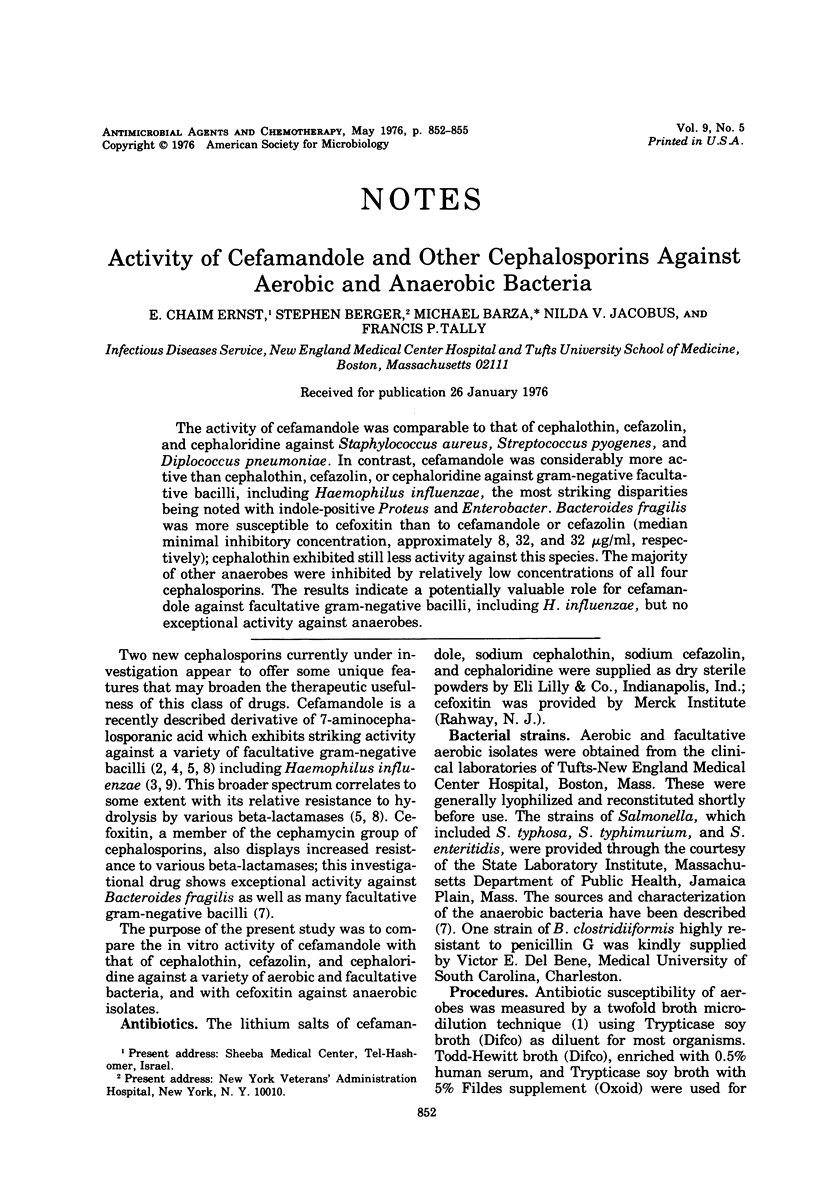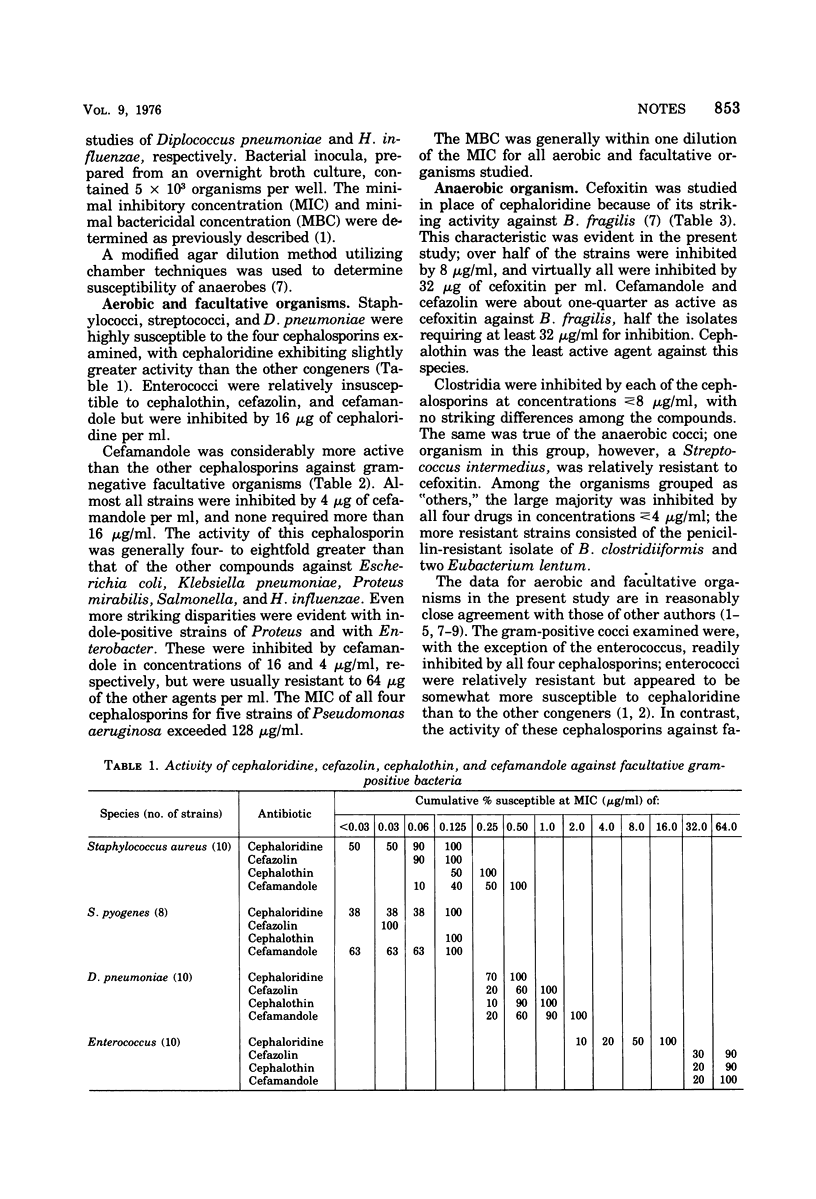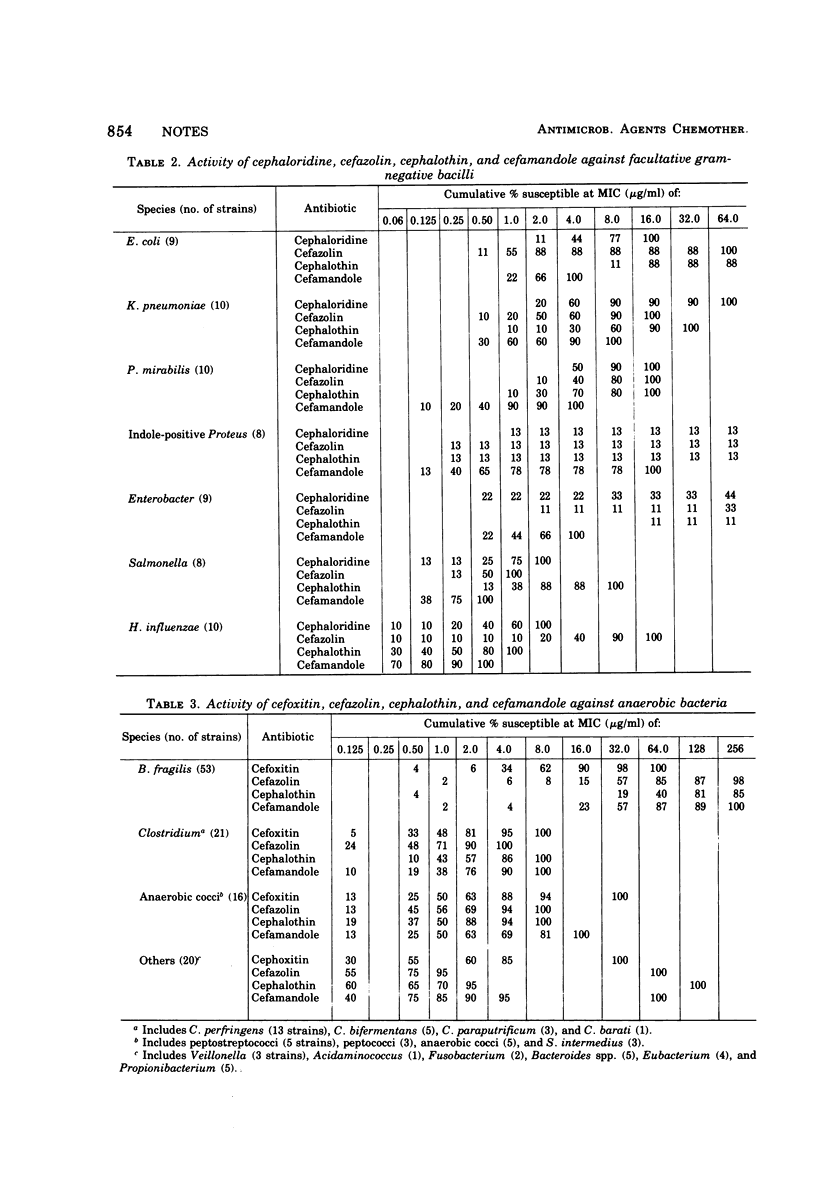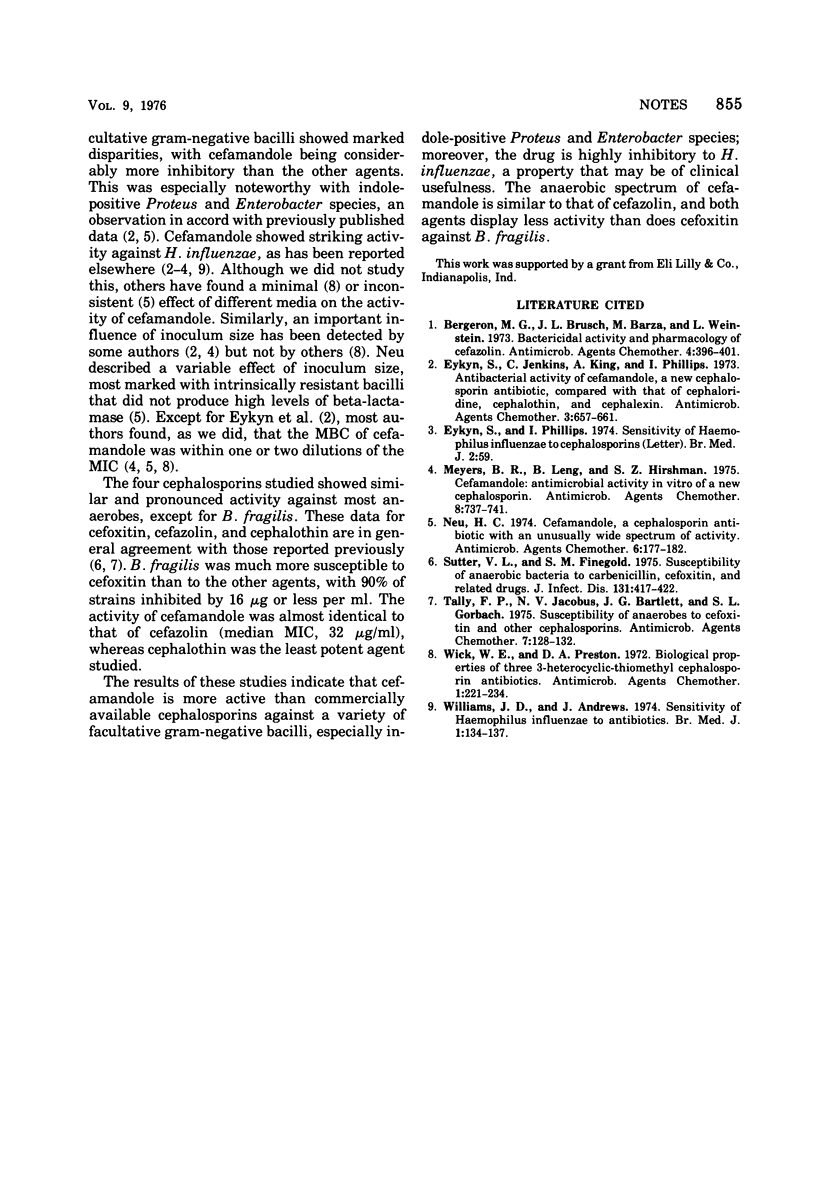Abstract
The activity of cefamandole was comparable to that of cephalothin, cefazolin, and cephaloridine against Staphylococcus aureus, Streptococcus pyogenes, and Diplococcus pneumoniae. In contrast, cefamandole was considerably more active than cephalothin, cefazolin, or cephaloridine against gram-negative facultative bacilli, including Haemophilus influenzae, the most striking disparities being noted with indole-positive Proteus and Enterobacter. Bacteroides fragilis was more susceptible to cefoxitin than to cefamandole or cefazolin (median minimal inhibitory concentration, approximately 8, 32, and 32 μg/ml, respectively); cephalothin exhibited still less activity against this species. The majority of other anaerobes were inhibited by relatively low concentrations of all four cephalosporins. The results indicate a potentially valuable role for cefamandole against facultative gram-negative bacilli, including H. influenzae, but no exceptional activity against anaerobes.
Full text
PDF



Selected References
These references are in PubMed. This may not be the complete list of references from this article.
- Bergeron M. G., Brusch J. L., Barza M., Weinstein L. Bactericidal activity and pharmacology of cefazolin. Antimicrob Agents Chemother. 1973 Oct;4(4):396–401. doi: 10.1128/aac.4.4.396. [DOI] [PMC free article] [PubMed] [Google Scholar]
- Eykyn S., Jenkins C., King A., Phillips I. Antibacterial activity of cefamandole, a new cephalosporin antibiotic, compared with that of cephaloridine, cephalothin, and cephalexin. Antimicrob Agents Chemother. 1973 Jun;3(6):657–661. doi: 10.1128/aac.3.6.657. [DOI] [PMC free article] [PubMed] [Google Scholar]
- Eykyn S., Phillips I. Letter: Sensitivity of haemophilus influenzae to cephalosporins. Br Med J. 1974 Apr 6;2(5909):59–59. doi: 10.1136/bmj.2.5909.59. [DOI] [PMC free article] [PubMed] [Google Scholar]
- Meyers B. R., Leng B., Hirschman S. Z. Cefamandole: antimicrobial activity in vitro of a new cephalosporin. Antimicrob Agents Chemother. 1975 Dec;8(6):737–741. doi: 10.1128/aac.8.6.737. [DOI] [PMC free article] [PubMed] [Google Scholar]
- Neu H. C. Cefamandole, a cephalosporin antibiotic with an unusually wide spectrum of activity. Antimicrob Agents Chemother. 1974 Aug;6(2):177–182. doi: 10.1128/aac.6.2.177. [DOI] [PMC free article] [PubMed] [Google Scholar]
- Sutter V. L., Finegold S. M. Susceptibility of Anaerobic bacteria to carbenicillin, cefoxitin, and related drugs. J Infect Dis. 1975 Apr;131(4):417–422. doi: 10.1093/infdis/131.4.417. [DOI] [PubMed] [Google Scholar]
- Tally F. P., Jacobus N. V., Bartlett J. G., Gorbach S. L. Susceptibility of anaerobes to cefoxitin and other cephalosporins. Antimicrob Agents Chemother. 1975 Feb;7(2):128–132. doi: 10.1128/aac.7.2.128. [DOI] [PMC free article] [PubMed] [Google Scholar]
- Wick W. E., Preston D. A. Biological properties of three 3-heterocyclic-thiomethyl cephalosporin antibiotics. Antimicrob Agents Chemother. 1972 Mar;1(3):221–234. doi: 10.1128/aac.1.3.221. [DOI] [PMC free article] [PubMed] [Google Scholar]
- Williams J. D., Andrews J. Sensitivity of Haemophilus influenzae to antibiotics. Br Med J. 1974 Jan 26;1(5899):134–137. doi: 10.1136/bmj.1.5899.134. [DOI] [PMC free article] [PubMed] [Google Scholar]


